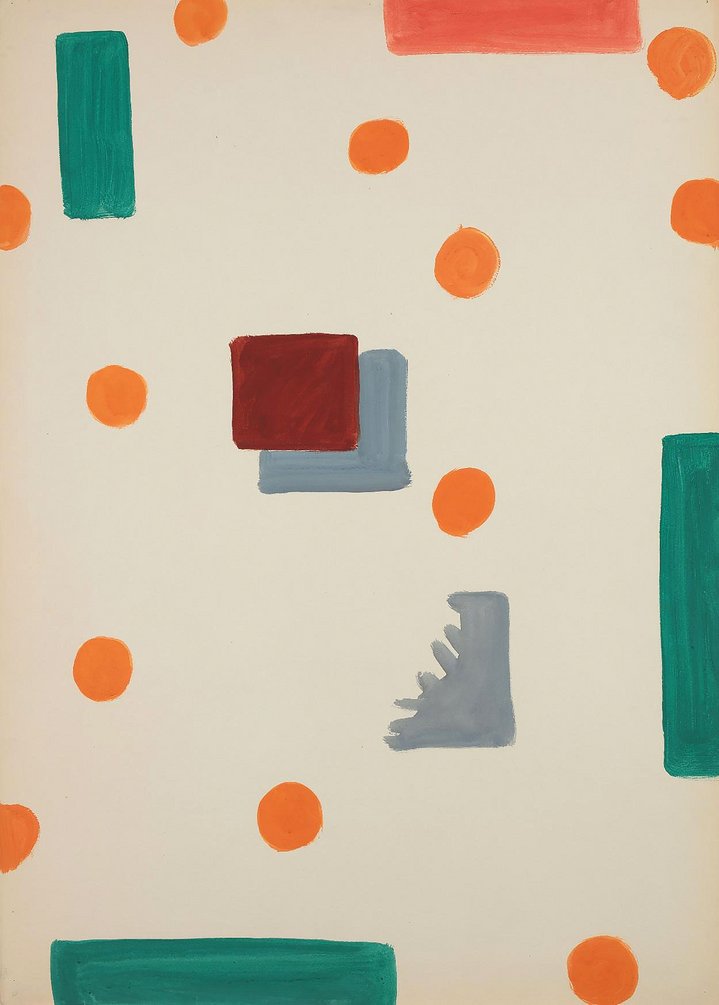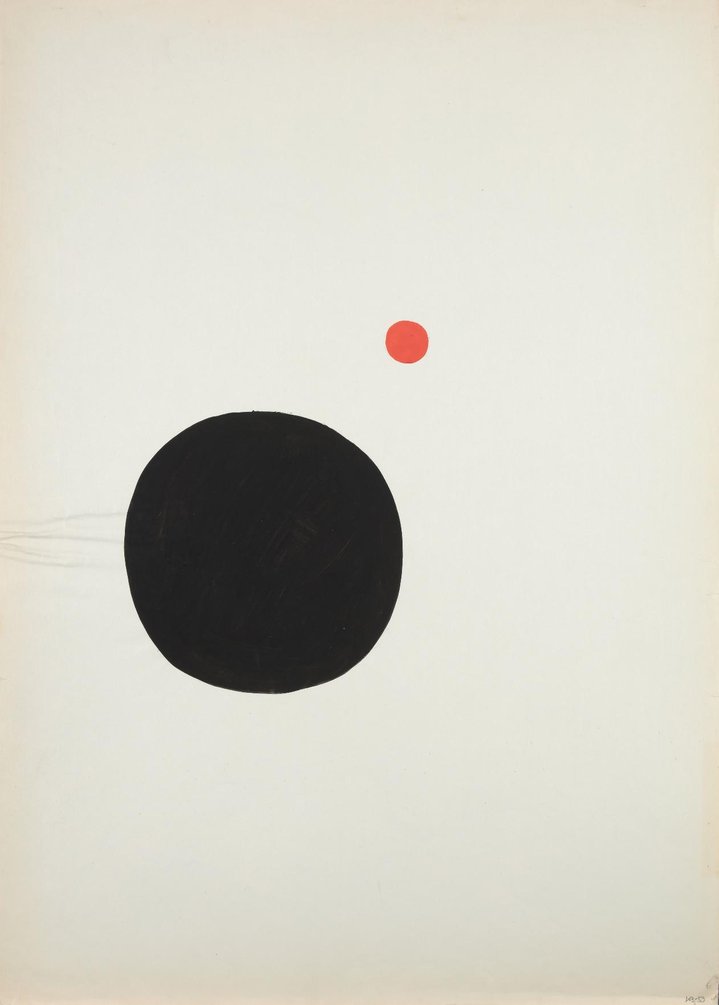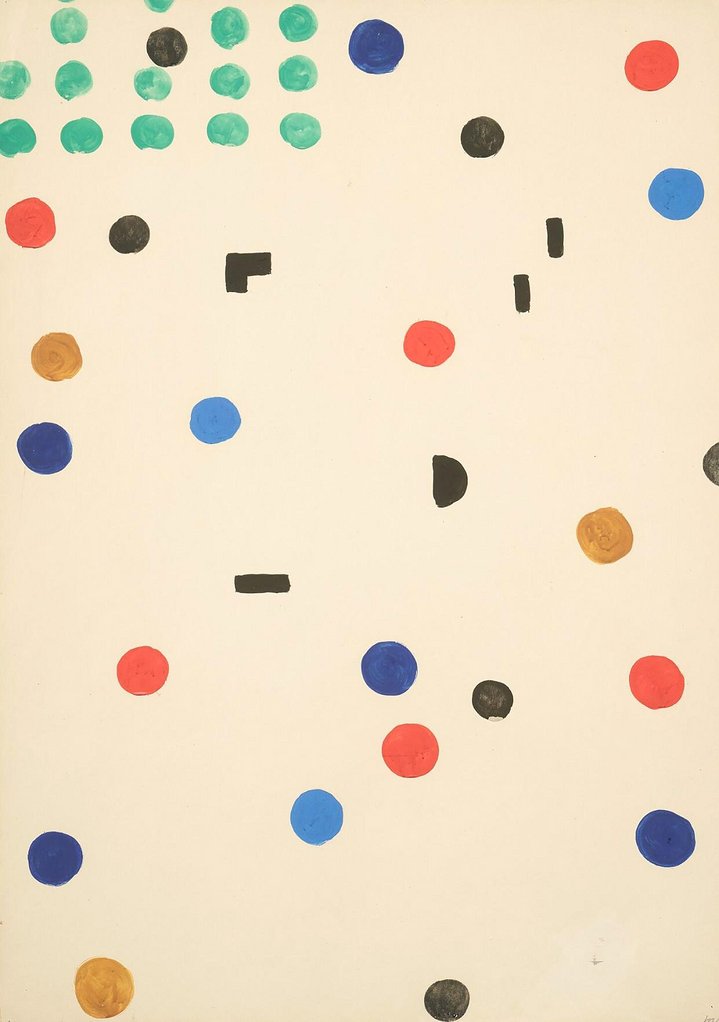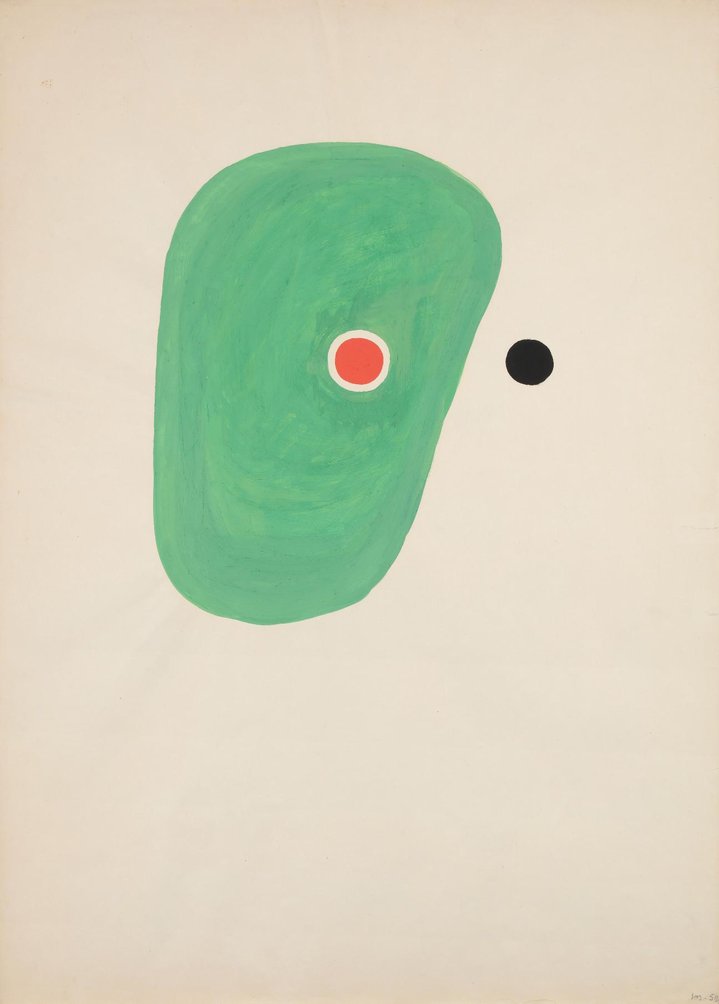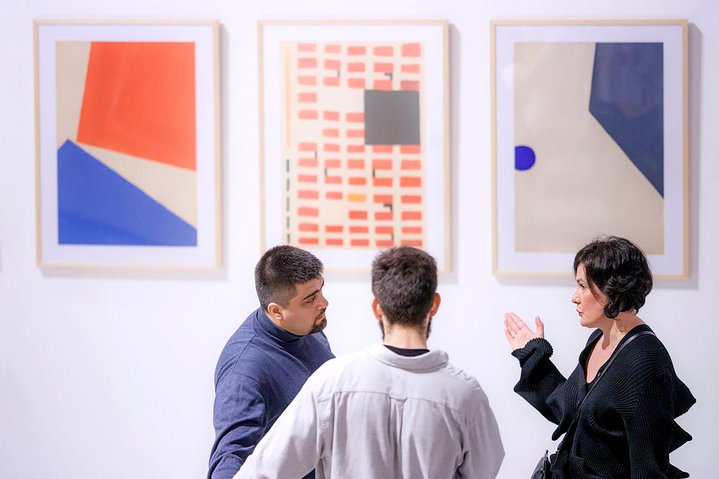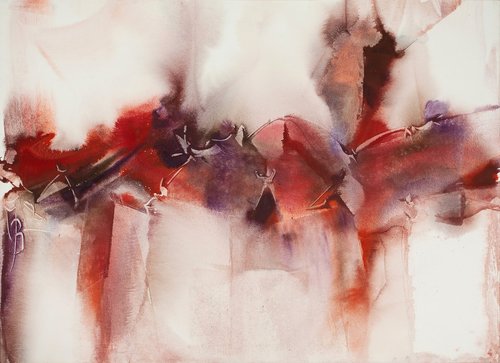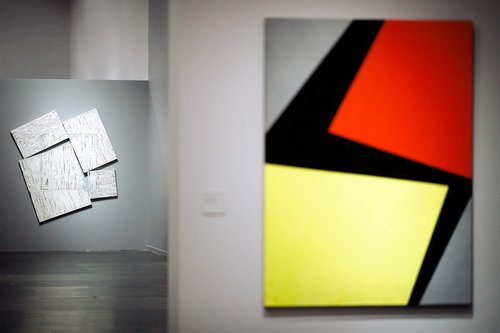Zlotnikov’s Analogue Visions of a Digital World
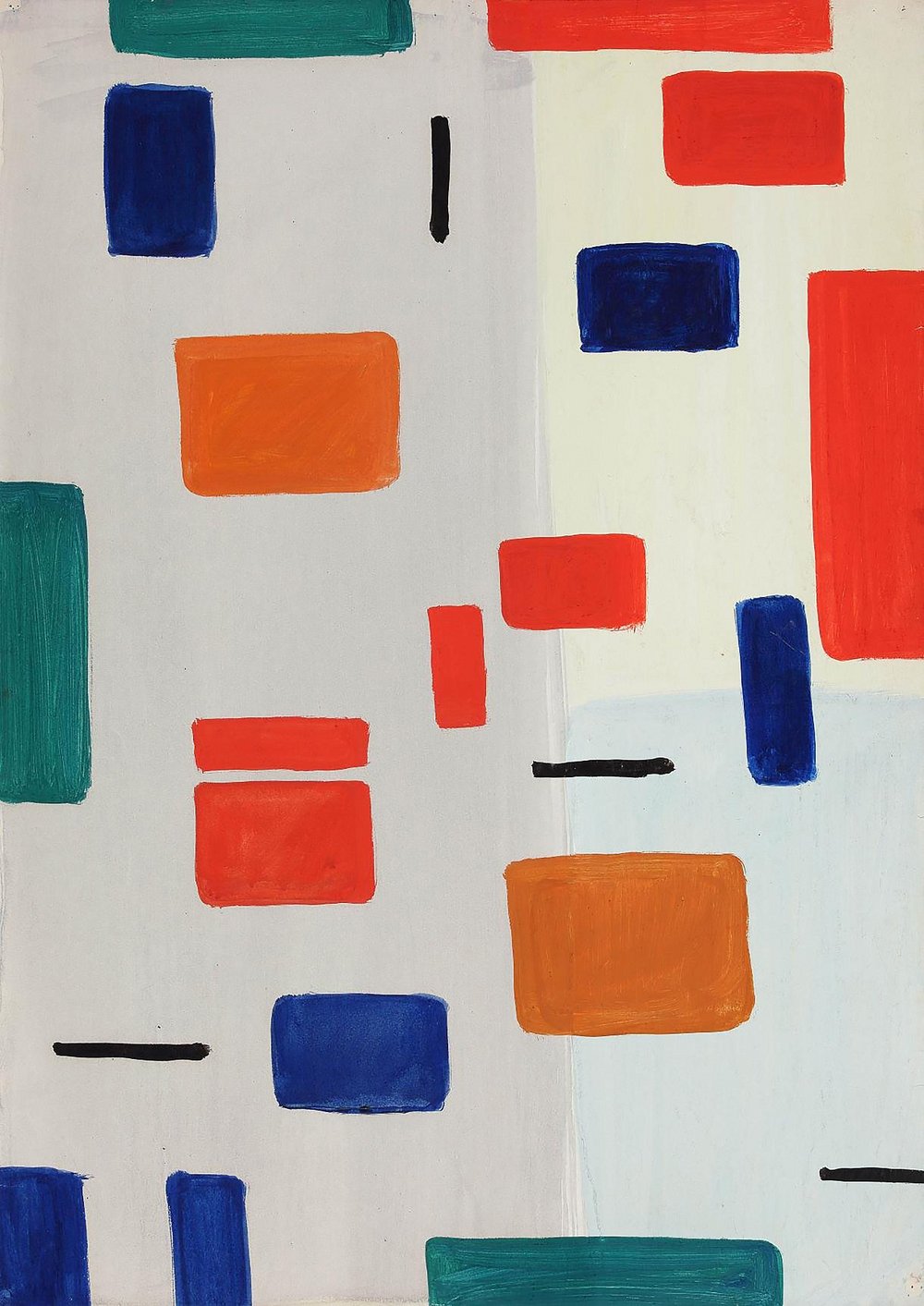
Yuri Zlotnikov. From the series ‘Signal System’, 1957–1962. Collection of Alexander Zlotnikov and Andrey Tyulenev
Soviet Russia was anathema to post-war minimalism, yet artist Yuri Zlotnikov was a pioneer in this movement creating prescient abstract works in which he attempted to bridge art and science. Now his most iconic of series called the ‘Signal System’ is being reinterpreted in a remarkable show at the State Tretyakov Gallery in Moscow.
Gaps in the chapters of Soviet-Russian unofficial art history are being plugged by a whole host of new exhibtions in Moscow museums and galleries. The legacies of artists like Mikhail Roginsky (1931–2004), Lev Povzner (b. 1939), Vladimir Weisberg (1924–1985), and Evgeny Mikhnov-Voytenko (1932–1988) are being reinterpreted for contemporary audiences and shown in ever more complex and interesting ways. The latest addition to these exciting new curatorial approaches at the Tretyakov Gallery is an exhibition of the art of Yuri Zlotnikov's (1930–2016) with a lean focus on his ‘Signal System’ series. Made between 1957 and 1962 it consists of abstract signs painted in gouache and tempera on paper. On the surface, resembling both sketches of chintz fabrics from the Khruschev’s Thaw and the cartography of Soviet post-constructivist settlements, these are among the rich sources of reference which the artist intentionally captured in this fascinating series.
In the Soviet Union there was a trend for scientific romanticism during the 1950s and 1960s and Zlotnikov was an adherent. Faith in Progress had been badly shaken byWorld War II, but it had not completely disappeared. Artists made an attempt to revive the great modernist project of the Avant-Garde, with its honesty, asceticism and social responsibility and once more the architectural schools of Mies van der Rohe and Le Corbusier became relevant. Artists followed a more reduced and modest form of what had been the grandiloquent Art Deco movement, and socialist realism. They strived for both minimalism and abstraction. New discoveries in science came to their rescue. Thanks to Claude Lévi-Strauss and Charles Peirce, the science of sign systems and semiotics took centre stage in linguistics. Norbert Wiener’s science of cybernetics appeared in 1948 and with it the search for norms in the generation, storage and transmission of information, both in organic life - in humans - and in machines. During the 1960s prototypes for what is the modern computeremerged.
Connected with psychotechnics, the fetishisation of systems and algorithms grew out of the previous experiments of the avant-garde of the 1910s and 1920s, there is a fascinating book on this subject by Margarete Voehringer which has recently been published, called ‘The Avant-Garde and Psychotechnics’. Among the many figureheads in this book arearchitect Nikolai Ladovsky, an adherent of the psychological interpretation of the perception of form in space; film director Vsevolod Pudovkin, who studied the role of reflexes in the physiological school of Ivan Pavlov and made the film ‘The Mechanics of the Brain’; and physicist Alexander Bogdanov, who engaged in the method of exchange blood transfusion in the hope of improving the quality of life and creating a new generation of people. It was thanks to Bogdanov that the Blood Transfusion Institute was founded in Moscow in 1926. In addition to these three heroes there was philologist Lev Vygotsky, who studied formal aspects of the impact of a literary text on the psyche, and poet Alexei Gastev, the founder of social engineering and the rational, economical and most productive organisation of the labour process.
This team seemed to be prophets of the ideas of cybernetics and unconditional trust in various systems of concrete, material psychotechnical communication. The essence of this communication as a search for some universal algorithm of information transfer was captured by Yuri Zlotnikov in his series.
‘Geiger Counter’ which Yuri Zlotnikov made in 1955-56 was his first scientifically modelled painting and it is now in the permanent collection of the State Tretyakov Gallery. This radation detection device gave the artist an excuse to paint a vertically elongated narrow picture with sections of rocks and an arrow, a sensor reacting to the presence of uranium. A year later the series ‘Protosignals’ appeared, several black and white ink sheets from this series are on display as part of the exhibition together with theoretical calculations. ‘Protosignals’ are an illustration of some experimental themes that preoccupied the artist at this time. The focus here is again on the technical laws of our mental interaction with an image. In these sketchily drawn cells are blots, which are abstract forms akin to Rorschach tests, from which the subject collects a mental and sensual image. Zlotnikov's hieroglyphs in the cells become symbols of the energy of movement and imagination.
His ‘Signal System’ came immediately after ‘Protosignals’, consisting of a huge number of sheets covered with coloured signs and symbols. For the first time they have been brought together by his grandsons, Alexander Zlotnikov and Andrey Tyulenev and presented as a large encyclopaedia of Zlotnikov’s lyrical and physical experiments. Along with Irina Gorlova, Head of the Department of Newest Trends at the Tretyakov, they curated the exhibition. Thanks to the combined efforts of the artists grandsons, art historian Evgenia Kikodze and art dealer Sergei Popov, Yuri Zlotnikov's theoretical work ‘At the Origins of the 'Signal System’ was published to coincide with the exhibition.
Like the expansive panorama of the ‘Signal System’ which confidently fills a large space in the museum, the book has a powerful if unusual counterpoint of physical and poetic experiences. They coexist, building into one another, leading to a new integrity of the image. Zlotnikov's large works on paper are indeed capable of hypnotising with their almost mathematical logic of fixing information, irritating our nerve receptors and suddenly transforming into pure contemplation. His sheets with dots, lines and waves are like analogue records of future digital codes: vintage, technological and poetic. Their rhythm, beauty and elegance evoke associations with international abstraction, from Mondrian to Malevich and El Lissitzky. And in the light of semiotics, the theory of sign systems, they are like an encrypted scientific treatise. Or, rather, like a poem…
Having dissociated himself from the extreme subjectivism and metaphysical themes of post-war abstract expressionism, Yuri Zlotnikov erected a unique construction of his knowledge of the world, which he tried to make synthetic, systemic and objective. And this construction turned out to be universal and unexpectedly poetic. It is time that we expand the horizons of our own knowledge about this second modernist Yuri Zlotnikov. I remember visiting in 2017 a Munich exhibition on post-war art in Europe and America between 1945 and 1965. The curators Okwui Enwezor, Katy Siegel, and Ulrich Wilmes chose only three artists from the USSR: Viktor Popkov (1932–1974), Evgeny Mikhnov-Voytenko, and Yuri Zlotnikov.






